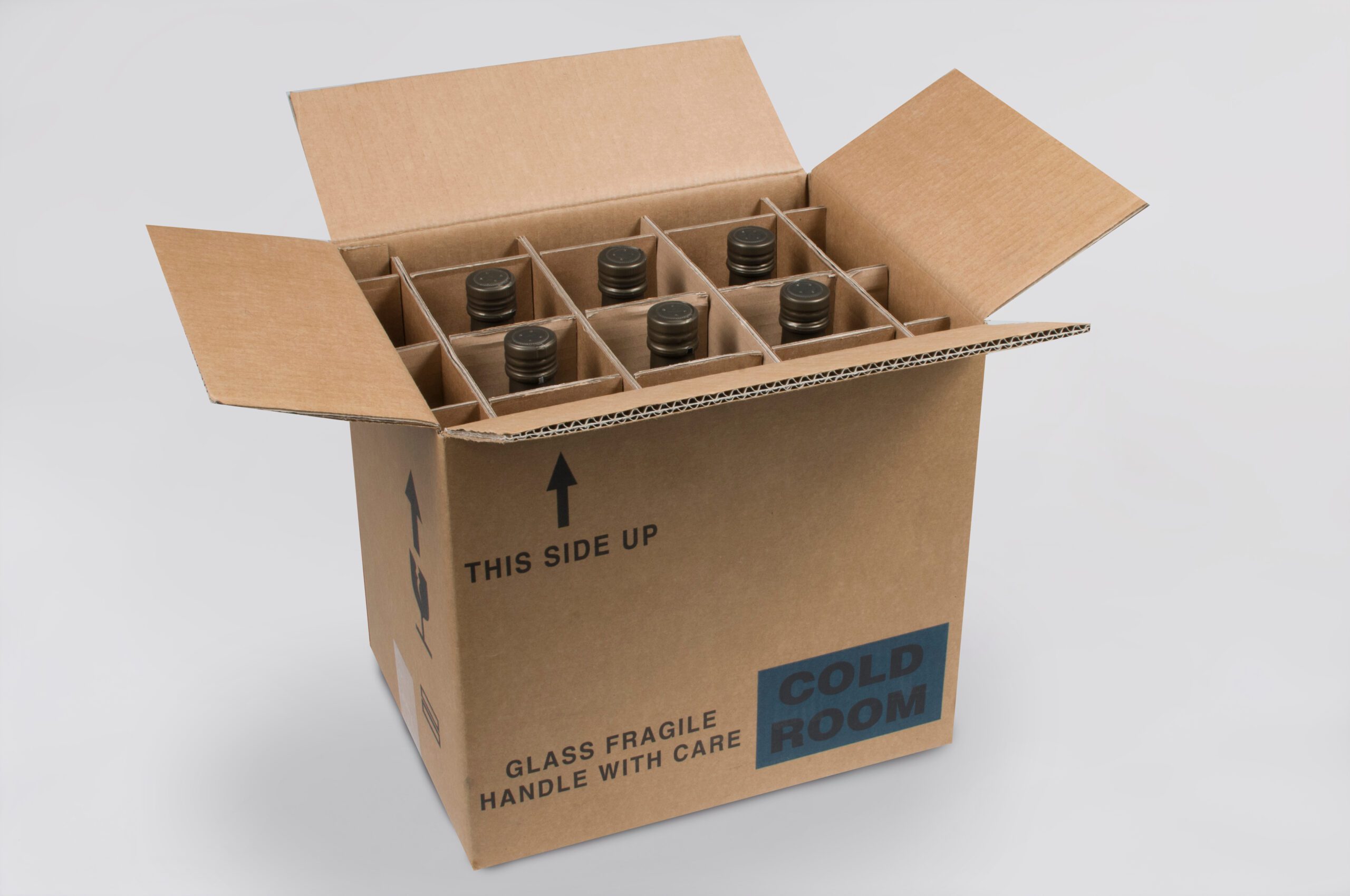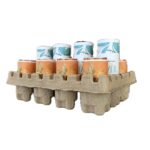How to Ship Temperature-Sensitive Food Products Safely
Shipping temperature-sensitive food products is easier than ever. Thanks to advances in shipping technology, the global cold chain logistics market is set to nearly double its worth to over $400 billion by 2028.
However, just because we know how to ship temperature-sensitive items doesn’t mean companies fully utilize cold shipping capabilities. From monitoring temperatures to safe handling procedures, temperature-sensitive items are challenging and require extra TLC to ship safely.
As temperatures continue to rise and break records, the processes surrounding shipping temperature-sensitive products will only become more challenging and essential. Let’s explore some tips and best practices to preserve product freshness during transit.
Cold Chain Logistics
Cold chain logistics is an industry term encompassing all the steps involved in shipping temperature-sensitive products. Many organizations use cold chain logistics, including e-commerce businesses, meal delivery services, and healthcare companies.
The cold chain process encompasses far more than ensuring items ship on temperature-controlled trucks. It’s a complex series of steps that start well before you even think about shipping anything.
Before You Ship
Before you figure out how to ship temperature-sensitive items, you need to store your products. This requires finding or maintaining a temperature-controlled warehouse. In addition, you must get insulated shipping boxes to insulate your products and maintain consistent temperatures in transit.
To minimize the amount of time temperature-sensitive products are in transit, you should consider contracting regional fulfillment centers. Utilizing national carriers along with regional carriers can also minimize melting or overheating. Of course, you’ll want to use refrigerator trucks throughout the delivery process.
Lastly, ensure adequate coordination between the processing and delivery of goods. The last leg of the journey to the customer’s doorstep is crucial and should not get caught in elongated processes that don’t account for the temperature-sensitive nature of your products.
Packaging Temperature-Sensitive Food Products

Choosing the right packaging for your temperature-sensitive products comes down to understanding the specific requirements of your items.
Some temperature-sensitive items require staying at or below freezing throughout the delivery process. Others must be kept above 0 degrees Fahrenheit but below 40 degrees Fahrenheit. Unique items like oils and inks may be chilled but must not become frozen. Consider your specific needs to help you choose the appropriate packaging.
Step-by-Step Packing Instructions
The following is a step-by-step guide for how to package temperature-sensitive items you plan to ship.
1 – Choose Insulating Materials
When shipping temperature-sensitive products, conventional packaging will not suffice. You need packaging with insulating materials that can maintain a stable temperature during transit. Look for shipper kits that include foam inserts, gel packs, and/or cold liners for maintaining a consistent temperature.
2 – Achieve the Target Temperature
Make sure your products are at the optimal temperature before packing. For items that need to be kept cool but not frozen, refrigerate them for several hours, ideally overnight, to allow them to reach the ideal temperature. If your products must remain frozen, freeze them for 24 hours. This step ensures the desired temperature is maintained for as long as possible during transit.
3 – Pack the Items
Pack the items inside the packaging, making sure to follow the manufacturer’s provided instructions for temperature-sensitive products. If shipping multiple items, make sure each has adequate protection inside the box to prevent damage during transit. For maximum safety, use
packaging inserts or dunnage materials to limit jostling and absorb impact.
4 – Add Insulating Product
Place the insulating material inside the box. For shipper kits with packaging inserts, position the insulating material inside the insert. If you’re using gel packs, freeze them for a minimum of 24 hours before using them inside your packaging to maximize their effectiveness for as long as possible.
5 – Seal and Label the Package
The final step in our guide for how to ship temperature-sensitive items is to seal and label the package. Close the outer box securely, using tape if necessary to make sure it stays closed during shipping. Label the package “Perishable” or “Keep Refrigerated” and include any special handling instructions for the carrier.
Dry Ice or Cold Packs?
Dry ice and cold packs are the most common shipping products in cold chain logistics. While both effectively keep products cold, each option has pros and cons.
Dry Ice Packs
What’s colder than ice cold? Dry ice. That’s why it’s especially effective when shipping frozen items—its temperature is usually around negative 79 degrees Fahrenheit. In cold chain logistics, this is a huge benefit.
However, such drastic temperatures have their own set of problems. It’s crucial that dry ice does not touch any food. If consumed, it can burn your mouth or cause painful stomach reactions. These hazards are why some international carriers do not allow dry ice on shipments.
Ice Packs
The best practices for how to ship temperature-sensitive items don’t always require shipping products completely frozen. Ice packs are best for deliveries that must stay between 32 and 60 degrees Fahrenheit.
Ice packs are more environmentally friendly than dry ice and complement businesses prioritizing sustainability. Their reusability not only helps reduce waste but also contributes to a greener shipping process.
Package With Care
Whether you choose dry ice or ice packs, the way you package your items is crucial. Temperature-sensitive food products should not touch dry ice to avoid freezer burn. Standard ice packs can also damage items by condensing or melting. To prevent bruising fruit or water damage, use watertight plastic or vacuum-sealed pouches in addition to your packaging materials.
Carrier Services

Whether you use corrugated cardboard or dry ice, no packaging stays cold forever. That’s why the carrier service you choose is so important. When deciding how to ship temperature-sensitive items, you want to choose a service that will get your products to their destinations as soon as possible while balancing the high costs of shipping.
Here is a brief overview of the nation’s top carriers for shipping food and other temperature-sensitive items:
- USPS: The company recommends you ship refrigerated items via Priority Mail and Priority Mail Express. Insurance on refrigerated packages does not allow claims for spoilage, regardless of whether the items arrived on time.
- UPS: With their Next Day Air service, you can limit transit time to 30 hours. Their 2nd Day Air shipping may work if shipments include foods that require minimal temperature control.
- FedEx: Custom Critical service and Priority Alert are excellent for monitoring cold shipments. They also have many dedicated cold chain centers for holding cold shipments.
Pack Temperature-Sensitive Food Products with Gorilla Shippers
A cold chain is only as strong as its weakest link. That’s why getting it right from the start is critically essential for time-sensitive food products. Logistics failures create product waste and customer dissatisfaction. However, proper planning can prevent a break in the cold chain. And it starts with the right packaging solutions.
At Gorilla Shipper, we offer insulated packaging products for bottles, jars, cans, and more. From standard styrofoam shippers to eco-friendly foam alternatives, we offer a large selection of packaging products for diverse business needs. All our shipper kits are ISTA 6-FEDEX-A TEST certified and approved. Shop now and enjoy huge savings when you buy in bulk!


























